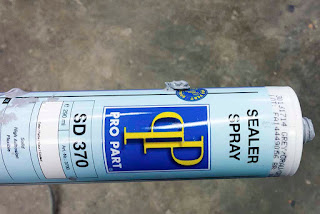In October of last year I found out that the mounting holes of the front flange of the rear carburettor on 't Kreng were worn out pretty badly ...
At the time I used a little bodge to keep the car on the road for the 26th edition of our Nachtrit. But after the event I thought it would be better to address the problem properly. So I started another of my little winter projects. I first wanted to pull the cylinder head or the complete engine, but a friend talked me out if it. Not only that he managed to convince me that it would be better to refurbish the Webers first and see how the engine would behave after that.
First thing to do was remove most of the parts and clean all the grime of from the carburettors which they had collected over the past 18 years. Glad I was able to use a friends ultrasonic cleaner, makes life a lot easier.
After which it was time to address the worn holes. As ever with the proper tools it was a piece of cake. Enlarging the two worn holes and machining bronze inserts to get them back to the original diameter took less than an hour ...
Still on the to do list is refitting all parts including fitting a pair of service kits to the carburettors, and fit the carburettors ...
Oh ... and the FHC is off to the paint shop for its first layers of paint. The underside, interior, engine bay end boot area will be painted this week. Rather curious how the colour looks when applied to larger areas!





















